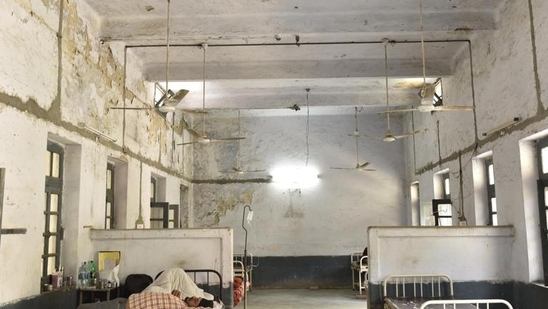India's sustained efforts in eliminating kala-azar
This article is authored by Dr Tanu Jain, director, National Centre for Vector Borne Disease Control (NCVBDC), New Delhi.
Visceral Leishmaniasis (VL), commonly known as kala-azar, is a life-threatening parasitic disease transmitted by sand flies was once a major public health challenge for India, affecting the poorest and most vulnerable communities, causing prolonged fever, weight loss, anaemia, and enlargement of the liver and spleen. If left untreated, it can be fatal. A related condition, Post Kala-azar Dermal Leishmaniasis (PKDL), occurs in some patients after treatment, leading to skin rashes that can harbour parasites and contribute to disease transmission. Despite this, through sustained efforts, innovative strategies, and unwavering commitment, India has met the elimination threshold for this disease, meaning that it no longer persists as a public health problem.

India's journey towards VL elimination has been marked by significant milestones. Since the inception of the National Kala-azar Elimination Programme (NKAEP) in 1991, we have seen a dramatic reduction in VL cases. From over 77,000 cases in 1992, the number has plummeted to just 485 in 2024. In the last 10 years alone, there has been a 95% decrease in cases. This achievement is a testament to the effectiveness of our targeted interventions, including early diagnosis and complete treatment, integrated vector management, and community mobilisation.
In the last few years, the major focus of our strategy has been on reducing the human reservoir of infection through prompt and complete treatment and decreasing vector density through indoor residual spraying (IRS). The introduction of single-dose Liposomal Amphotericin B has revolutionised treatment, achieving a cure rate of 99%. Additionally, the programme is being championed at the uppermost echelons of the government with Prime Minister Narendra Modi, lauding the efforts taken for the elimination of kala-azar, through his radio address via Mann ki Baat. This, coupled with regular reviews by the health minister a has led to the reaffirmation of support from the health ministers across endemic states, ensuring India achieves success in elimination
Now that the elimination target has been met, sustaining our gains becomes crucial. The consolidation phase requires intensified surveillance and targeted IRS and community engagement. A cornerstone of India’s efforts has been its robust approach to surveillance, which ensures early detection, prompt treatment, and sustained disease control. The strategy integrates both active and passive surveillance to enhance detection and response. Health workers go door-to-door in villages four times a year, especially in areas where cases have been found before or where the disease might be spreading silently. This helps them find and treat patients quickly before the disease can spread further. At the same time, hospitals and health centres continue to report any new cases they come across. To make tracking cases even better, a digital system called the Kala-azar Management Information System (KAMIS), embedded in the Integrated Health Information Platform (IHIP), has been set up. This system collects information in real-time, helping health officials make quick decisions and act when needed. Moreover, to further these efforts we have identified medical colleges as regional centres to sustain elimination, ensuring continued expertise and vigilance in disease management.
Despite the progress, sustaining VL elimination comes with a distinct set of challenges. Ensuring multiple rounds of active case detection and follow-up of VL and PKDL cases remains critical. Tribal areas pose additional difficulties, where traditional healers often serve as the first point of contact, delaying formal medical intervention. Enhancing surveillance through the KAMIS portal in new, silent and persistent villages and transmission hotspots are also key areas where we are ensuring attention.
India is committed to further reducing VL incidence to below 0.5 cases per 10,000 population at the block level by 2027-28. Periodic epidemiological assessments will be conducted to evaluate VL status in non-endemic and doubtful areas, ensuring that new outbreaks do not emerge. National and state-level capacity-building programs will be strengthened to maintain expertise in case management and vector control. Collaborations with the Indian Council for Medical Research and ICMR and National Centre for Disease Control will support ongoing research and policy development to sustain elimination efforts in the long term.
India’s success in eliminating VL serves as a global model for tackling other neglected tropical diseases (NTDs). The combination of active and passive surveillance, targeted vector control, community engagement, and scientific innovation has proven to be a winning strategy. Our achievements would not have been possible without the tireless efforts of our ground-level health workers. These dedicated individuals have been at the forefront of our fight against VL, conducting door-to-door screenings, educating communities, and encouraging treatments.
India's success in eliminating VL is a testament to the power of commitment, innovation, and collaboration. Moving forward, we remain steadfast on sustaining this achievement, ensuring that VL elimination translates into long-term health security for all.
This article is authored by Dr Tanu Jain, director, National Centre for Vector Borne Disease Control (NCVBDC), New Delhi.
All Access.
One Subscription.
Get 360° coverage—from daily headlines
to 100 year archives.



HT App & Website







